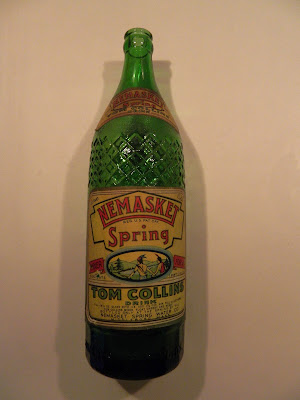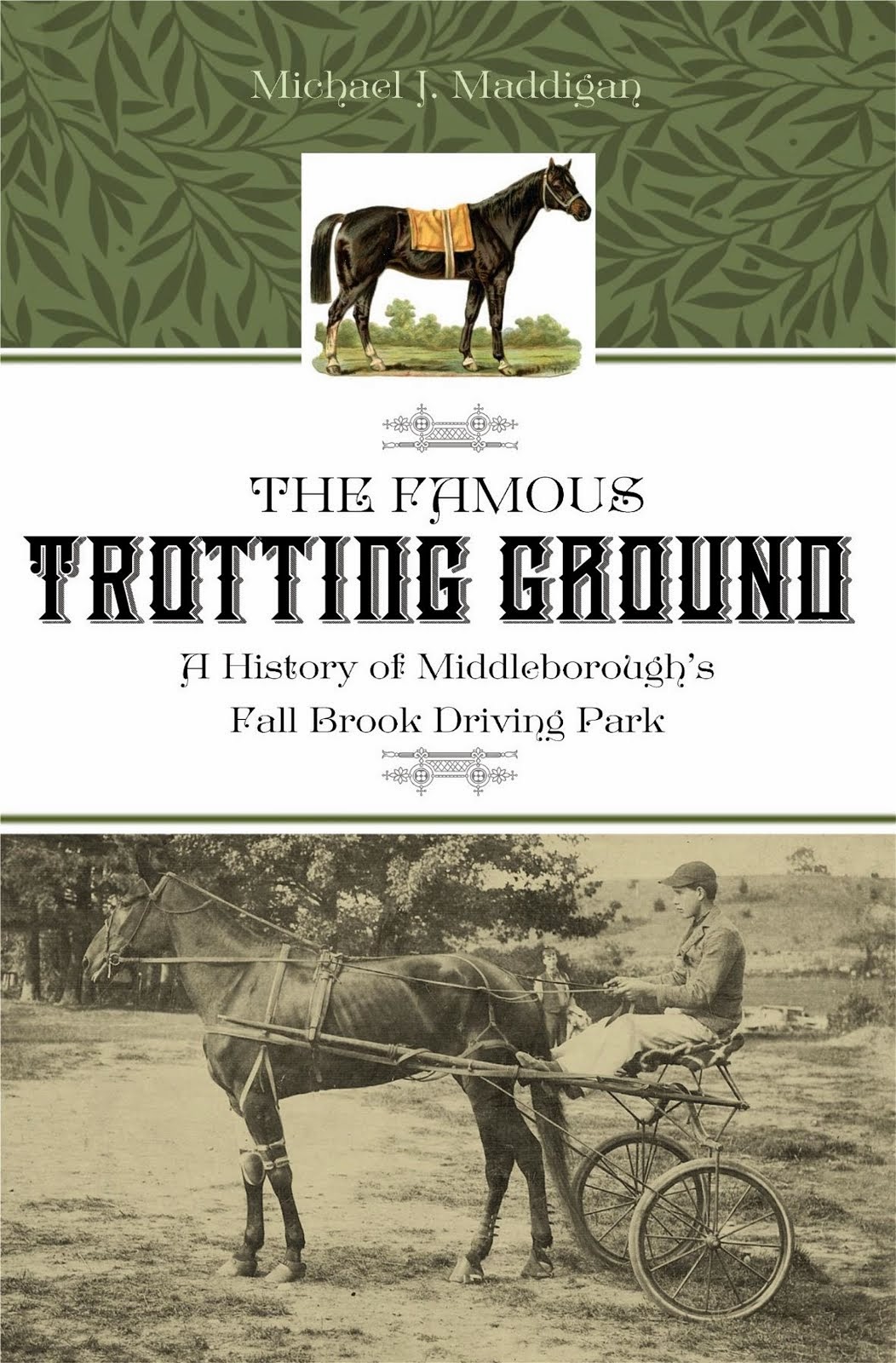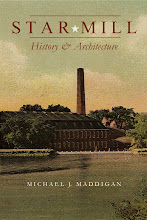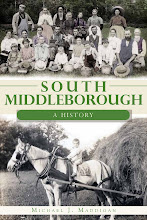Sunday, December 3, 2017
Nemasket Spring Water Company Drivers
In order to deliver its products, the Nemasket Spring Water Company required several drivers. From left to right are Sulo Jussila, Albert Malefant, George Chilian, Edmund Rondelli, Stan Sinoski and Armen Kayajan. With business reaching a new peak n 1937, the plant began 24-hour operation, requiring a fleet of 10 trucks to deliver its product throughout southern Massachusetts.
Nemasket Spring Bottles
During the 1930s, Nemasket Spring on Plymouth Street produced a variety of beverages, producing under its own name as well as the Cape Cod brand. Early in the decade, the firm bottled its sodas and mixers in pressed green glass bottles manufactured to resemble cut glass. Later, simpler clear bottles were used for bottling the Cape Cod brand sodas. During the mid-1930s, the firm also produced unflavored carbonated water retailed in heavy glass soda siphons, a development likely fostered by the repeal of Prohibition in December 1933.
Bottles from the collection of Recollecting Nemasket. The Cape Cod brand bottle still contains the original cola.
Wednesday, November 22, 2017
What would the Pilgrims have Thought?
This tidbit from the Brockton Enterprise of August 24, 1912 indicates that the cranberry truly was king in Middleborough, the harvest that year even postponing a traditional local meeting of churches.
"There isn't going to be a meeting of the Plymouth County neighborhood convention of the churches next month because of cranberries.
"That sounds rather strange, but Gen. Sec. A. H. Wardle of the [Middleborough] Y. M. C. A., who is secretary of the convention, announces this to be the reason for missing the September meeting.
"Ordinarily the sessions are resumed in September after the vacation period, and it was expected the same custom would be in effect this year....
"But it didn't happen. The active members of these churches are so busy gathering up cranberries, which literally translated means money, that they can't stop to entertain church delegates, Mr. Wardle states, so the meeting will go over till October.
"It is said to be the first time the convention failed to resume its meetings in September, and the reason assigned is considered a very unusual one."
Source: Brockton Enterprise, "Cranberry is King, Religious Convention is Postponed", August 24, 1912.
Tuesday, October 31, 2017
Workmen Unearth Human Skull, 1931
Here's a Hallowe'en tidbit from the pages of the November 20, 1931 Middleboro Gazette.
Workmen Unearth Human Skull
Mystery surrounds the gruesome finding of a human skull by Calvin R. Hosford, Albert Carr and Fred Blanchard yesterday morning as they were excavating for a small building on the new state highway [Route 28] on East Grove street on Mr. Hosford's property. As the men were digging towards the wooded section, the skull, which was but a few feet under ground came rolling down into the loosened sand. Although the men kept digging there were no human bones found.
Chief of Police Sisson was called and to him was delivered the skull which was brought to the police station and viewed by Medical Examiner A. V. Smith. It was large and broad and had been in the ground a long time and was evidently from a man of more than middle life. The teeth were wide and heavy and a worn space in the side showed the man to be a smoker having gripped his pipe tightly.
A checkup was started by the police, but as far as they can learn there have been no missing persons reported for years and in the absence of any more bones of a human skeleton and marks of identification the case does not promise any solution. There were no marks of violence which rather explodes any murder theory from head injuries at least, but its depth under the ground also dispels any suicide angle.
The case will probably find its way into the archives of the police as one of those unsolved mysteries you have read about.
The location of the discovery was on Hosford's property known in deeds as the "Sharing Brook Lot", a portion of which is now occupied by The Cabin restaurant (formerly the Log Cabin). Despite the rareness of unearthing human remains and the even greater curiosity of discovering an incomplete human skeleton, the news was "buried" on page 4 of the newspaper.
Workmen Unearth Human Skull
Mystery surrounds the gruesome finding of a human skull by Calvin R. Hosford, Albert Carr and Fred Blanchard yesterday morning as they were excavating for a small building on the new state highway [Route 28] on East Grove street on Mr. Hosford's property. As the men were digging towards the wooded section, the skull, which was but a few feet under ground came rolling down into the loosened sand. Although the men kept digging there were no human bones found.
Chief of Police Sisson was called and to him was delivered the skull which was brought to the police station and viewed by Medical Examiner A. V. Smith. It was large and broad and had been in the ground a long time and was evidently from a man of more than middle life. The teeth were wide and heavy and a worn space in the side showed the man to be a smoker having gripped his pipe tightly.
A checkup was started by the police, but as far as they can learn there have been no missing persons reported for years and in the absence of any more bones of a human skeleton and marks of identification the case does not promise any solution. There were no marks of violence which rather explodes any murder theory from head injuries at least, but its depth under the ground also dispels any suicide angle.
The case will probably find its way into the archives of the police as one of those unsolved mysteries you have read about.
The location of the discovery was on Hosford's property known in deeds as the "Sharing Brook Lot", a portion of which is now occupied by The Cabin restaurant (formerly the Log Cabin). Despite the rareness of unearthing human remains and the even greater curiosity of discovering an incomplete human skeleton, the news was "buried" on page 4 of the newspaper.
Saturday, October 28, 2017
Lorenzo's 1971
Before Lorenzo's built a dining room in 1972, sit-down dining at the West Grove Street Italian restaurant meant a snappily-uniformed car-hop who brought your meal to you in your car. Although car-hop service is a thing of the past, Lorenzo's remains a Middleborough landmark. Here the staff and owners Lorenzo and Geraldine Grosso have assembled for a picture in 1971.
Sunday, July 30, 2017
Bicycle! Bicycle!
"I want to ride my bicycle, I want to ride my bike. I want to ride my bicycle, I want to ride it where I like."
Bicycling as a recreational pastime and a means of transport flourished in late nineteenth and early twentieth century Middleborough. Not all were pleased with this development, however, including resident curmudgeon James A. Burgess who wrote the following to the Middleboro Gazette in 1908 regarding "Reckless Bicycle Riders":
"I have a few words to say on the recklessness of bicycle riding and what rights the human family has to the highway today. Under the old common law the highway belongs first to the person on foot, but the thing has been reversed, and today he is the last person who has any rights on it. And what rights has he?
"The bicycle rider has come and come to stay. He rides more on the sidewalks in this village and town than he does anywhere else, outside a small section in the centre. Take for instance the sidewalk across the rear of the town house lot. It is safe to say that five bicycle riders out of six ride on that walk. And I am told that women who live in that section don't pretend to come out, much less to attempt to cross it evenings....
"Tuesday night, upon crossing [the Four Corners], I was hit by a bicycle rider and thrown flat upon my back. The young man did not stop to see if I was injured, which I was not. He is known. Now if he will call around and see me, I will apologize for being in his way and guarantee that I will never be there again if I can help it."
Fortunately for Burgess, the bicyclists pictured here confined their riding to the rural precincts with the Green being a conspicuous locale.
Bicycling as a recreational pastime and a means of transport flourished in late nineteenth and early twentieth century Middleborough. Not all were pleased with this development, however, including resident curmudgeon James A. Burgess who wrote the following to the Middleboro Gazette in 1908 regarding "Reckless Bicycle Riders":
"I have a few words to say on the recklessness of bicycle riding and what rights the human family has to the highway today. Under the old common law the highway belongs first to the person on foot, but the thing has been reversed, and today he is the last person who has any rights on it. And what rights has he?
"The bicycle rider has come and come to stay. He rides more on the sidewalks in this village and town than he does anywhere else, outside a small section in the centre. Take for instance the sidewalk across the rear of the town house lot. It is safe to say that five bicycle riders out of six ride on that walk. And I am told that women who live in that section don't pretend to come out, much less to attempt to cross it evenings....
"Tuesday night, upon crossing [the Four Corners], I was hit by a bicycle rider and thrown flat upon my back. The young man did not stop to see if I was injured, which I was not. He is known. Now if he will call around and see me, I will apologize for being in his way and guarantee that I will never be there again if I can help it."
Fortunately for Burgess, the bicyclists pictured here confined their riding to the rural precincts with the Green being a conspicuous locale.
Bicyclist, Middleborough Green, 1912.
For many like the gentleman pictured here, bicycles represented a relatively inexpensive means of transportation. Automobiles had not yet been popularized and, like horses, remained expensive and impractical for many young industrial workers who found employment in local factories. Meanwhile, trolleys and the steam railroad were limited in geographic scope. The bicycle, however, allowed individuals the freedom to explore and travel.
Middleborough bicycle enthusiasts, photograph by John A. Belden, c. 1900.
The two women pictured here represented a new generation of bicycle riders. Previously many women had been much dependent upon male relations to convey them about so the bicycle represented a new independence for them. Susan B. Anthony maintained that bicycle-riding had "done more to emancipate women than anything else in the world."
Lady bicyclist, Middleborough Green, late 1800s
Women bicyclists were sometimes criticized for riding about the countryside unescorted which some found shocking. More dismaying for conservative-minded individuals was the adoption of bloomers by lady bicycle riders which made riding both safer and easier. The woman pictured here, however, remained more modestly dressed in her ankle-length skirt. Such skirts, however, required a different design for women's bicycles and explains why the top tube (or brace) on the frame of a woman's bicycle was substantially lower than on bicycles ridden by their male counterparts.
Friday, July 28, 2017
Battis Field Dedication
The following
souvenir scorecard was distributed as part of the dedication celebration for Battis Field, November 8, 1941.
Tuesday, May 2, 2017
Lakeville Trolley Scare, 1910
Find it difficult to retrieve change you drop down between the seat and the console in your car? Well here’s a bit of unnerving news from 1910 Lakeville.
Dynamite Scare.
Passengers Fled from Car Near Lakeville.
Workmen Dropped Stick of Explosive, but No One Hurt.
Excitement
prevailed on the electric car from Elliott’s Corner [East Taunton] to the
Lakeville town house [October 31] afternoon, when it was discovered that a
workman who was on his way to New Bedford had dropped a stick of dynamite
between the window sash and the car seat. The stick of the explosive was small
and just fitted in the slot where the window slides down between the side
panels of the car.
It was noticed that
the workman was trying to recover something from the small cavity, and when
asked by conductor Cornell what he was doing he answered that he had dropped a
stick of dynamite in there.
The passengers at
once became panic-stricken. Motorman Frazer and the conductor thought of the
wires concealed there and saw visions of the car and passengers going up in the
air. It was decided to stop the car and allow the passengers to walk to the
town house, a short distance away.
The car was run
slowly to the car barn five miles away, extra precaution being taken against
any great jar. Master mechanic Edward Robinson fished the stick out with a
wire, and it was exploded in the woods in the rear of the station.
The passengers,
after recovering from their fright, took the next car to [Middleborough].
Traffic was delayed only a short time while a car was being substituted.
Illustration:
Lakeville trolley car with Lakeville Town House in the background, c. 1900. The trolley mentioned in the article would have been an enclosed trolley that typically replaced the open trolley pictured here which was used during the warmer months.
Source:
Boston Globe, "Dynamite Scare", November 1, 1910.
Illustration:
Lakeville trolley car with Lakeville Town House in the background, c. 1900. The trolley mentioned in the article would have been an enclosed trolley that typically replaced the open trolley pictured here which was used during the warmer months.
Source:
Boston Globe, "Dynamite Scare", November 1, 1910.
Subscribe to:
Posts (Atom)





































+of+Smoky+Mountains+018.jpg)